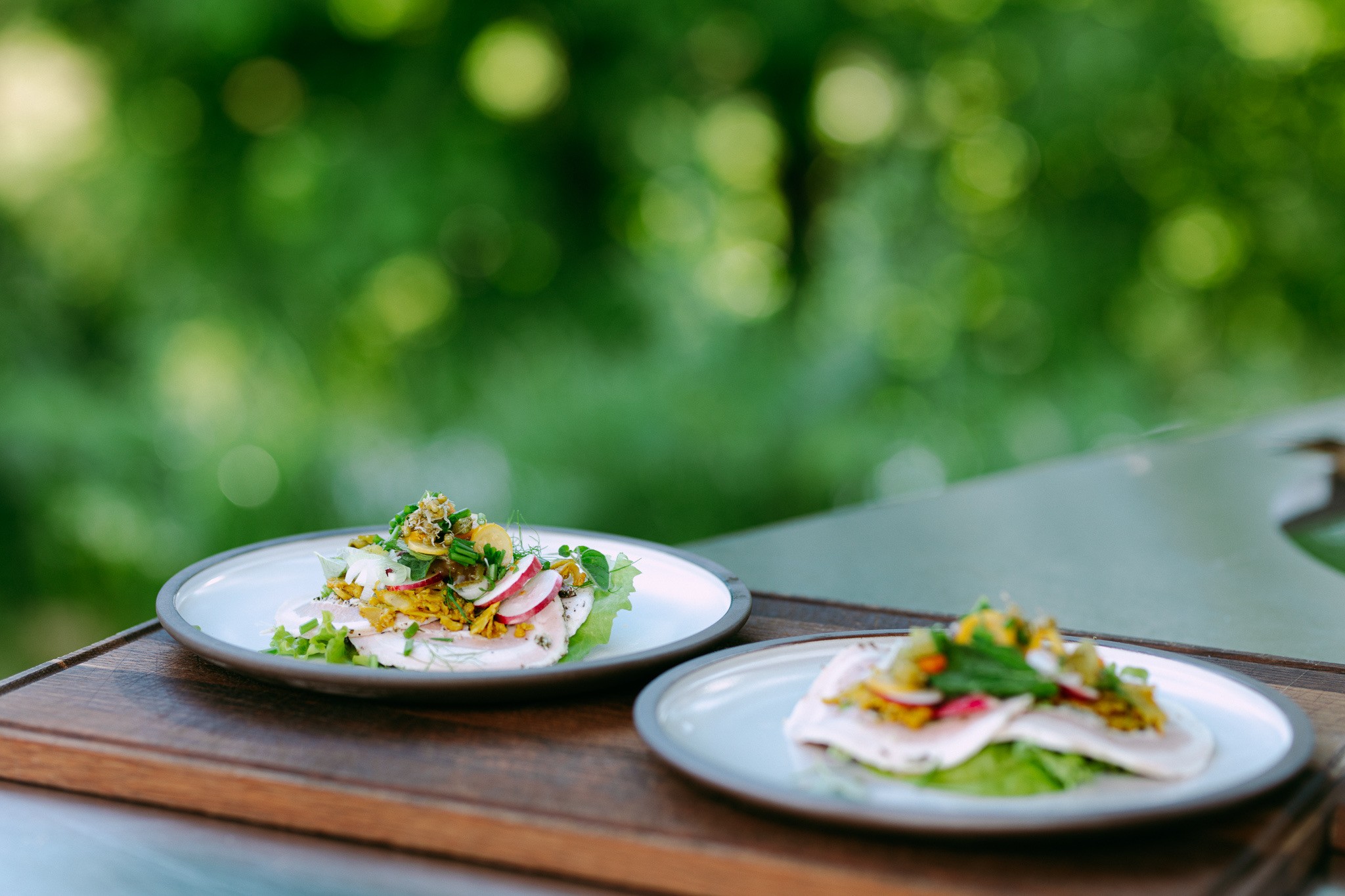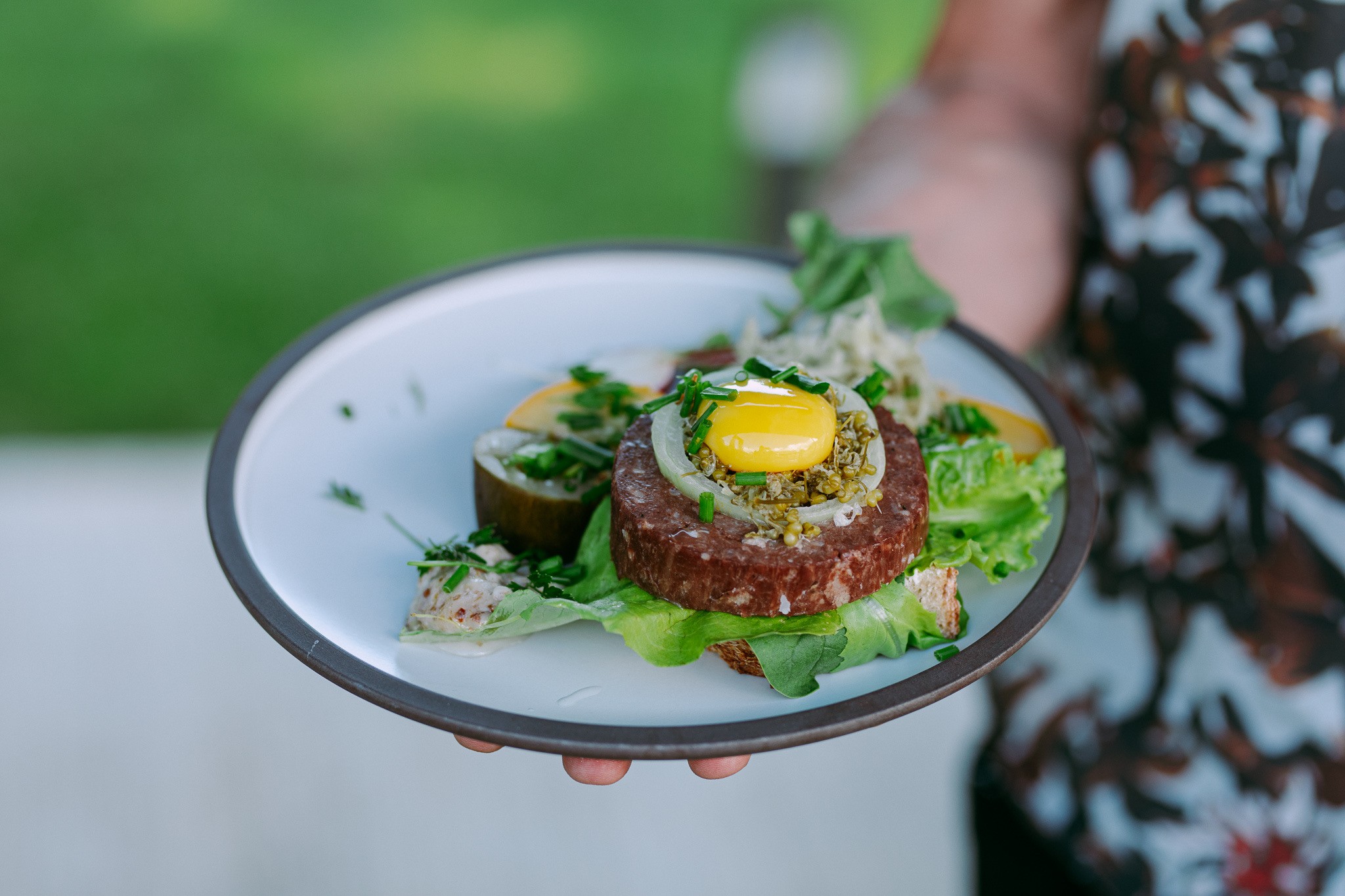Smørrebrød
Smørrebrød, Danish open-face sandwiches, aren’t just slices of bread piled with any toppings. There are rules to them, and a whole culture of hospitality that surrounds them.
The first time the mention of the word appeared around year 1750 in a poem, and by the late 19th century, squares of buttered dense rye topped with meat, fish, or eggs were regularly on offer in Copenhagen restaurants.
Niels Peter Pretzmann, the founder of Senatorių Pasažas, shows how to make this beloved national Danish dish on LRT program “Beatos virtuvė”.
The link to the program below.
For Rullepølse Smørrebrød
| For Beef Tartar Smørrebrød
|


Smørrebrød is build on five principle flavour components: salt, umami which is usually the protein, sweet, sour and bitter.
We start with rye bread from our bakery, spread some carrot spread (or butter). Generously cover the spread with lettuce leaves. Add a thick layer of rollepolse – a traditional Danish roast bacon. Add some pickled cauliflower, fresh garden radishes and caramelised onion jam for sweetness. Add some fresh herbs!
Be creative! Use your imagination!


The second smørrebrød is made with beef tartar, which is called Parisian beef in Denmark.
Niels uses Lithuanian sausage version of this beef dish, made at 14Horses restaurant. Fry the slice of tartar 2 minutes per side in a hot pan. Cut a thick slice of sourdough bread, shape it into a square. Spread garlic butter with herbs. Add a layer of salad. Then layer up as follows: fried beef tartar, a ring of onion, filled up with marinated ramson capers and fresh egg yolk. Add some marinated baby courgettes on the side.
But most importantly – be creative with what you have!



